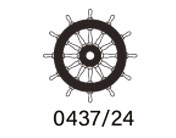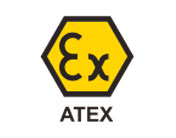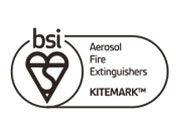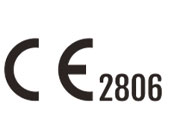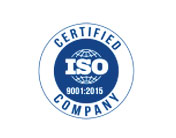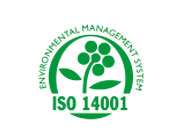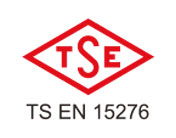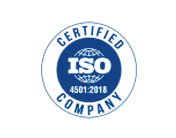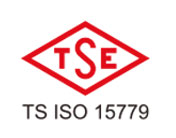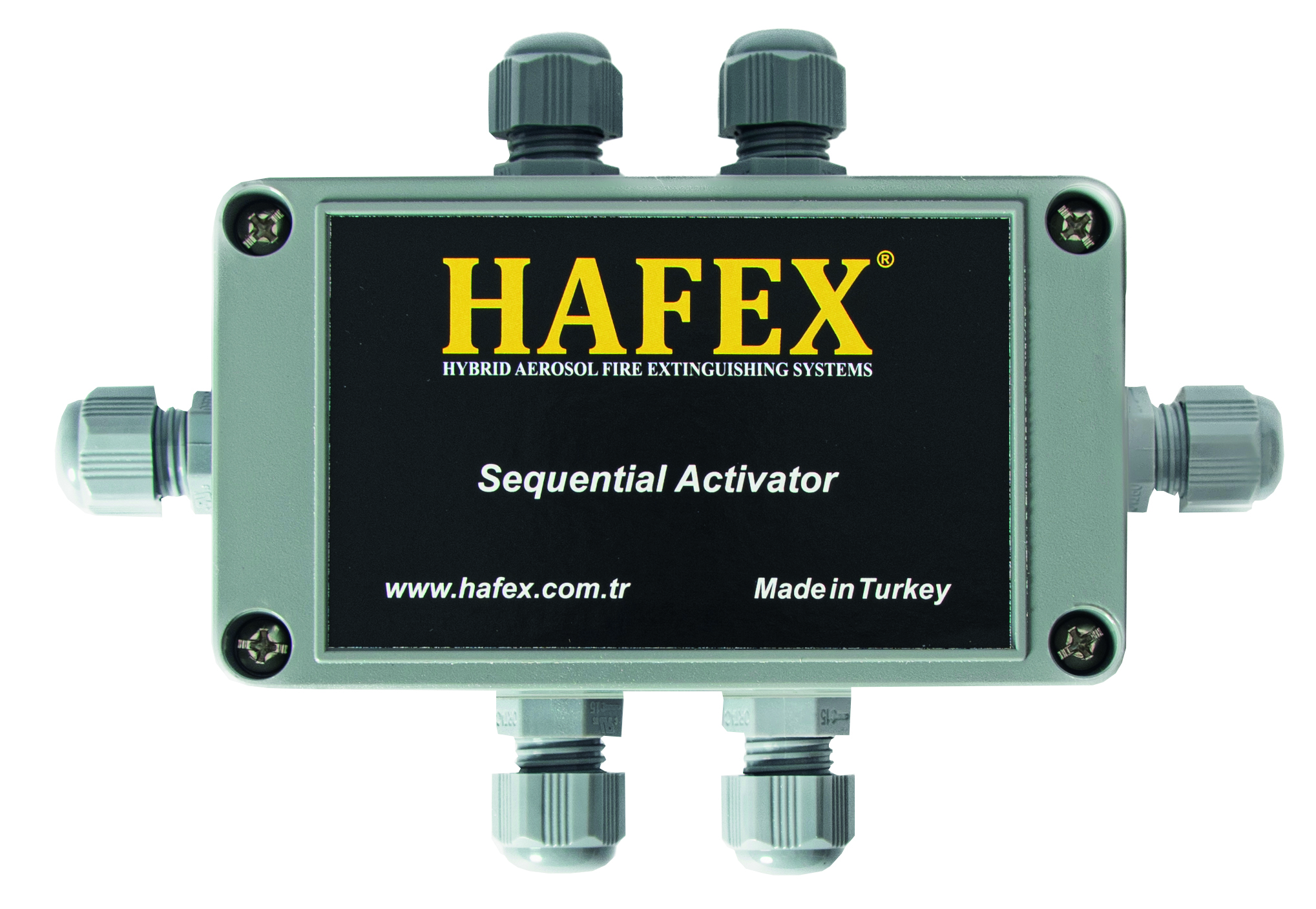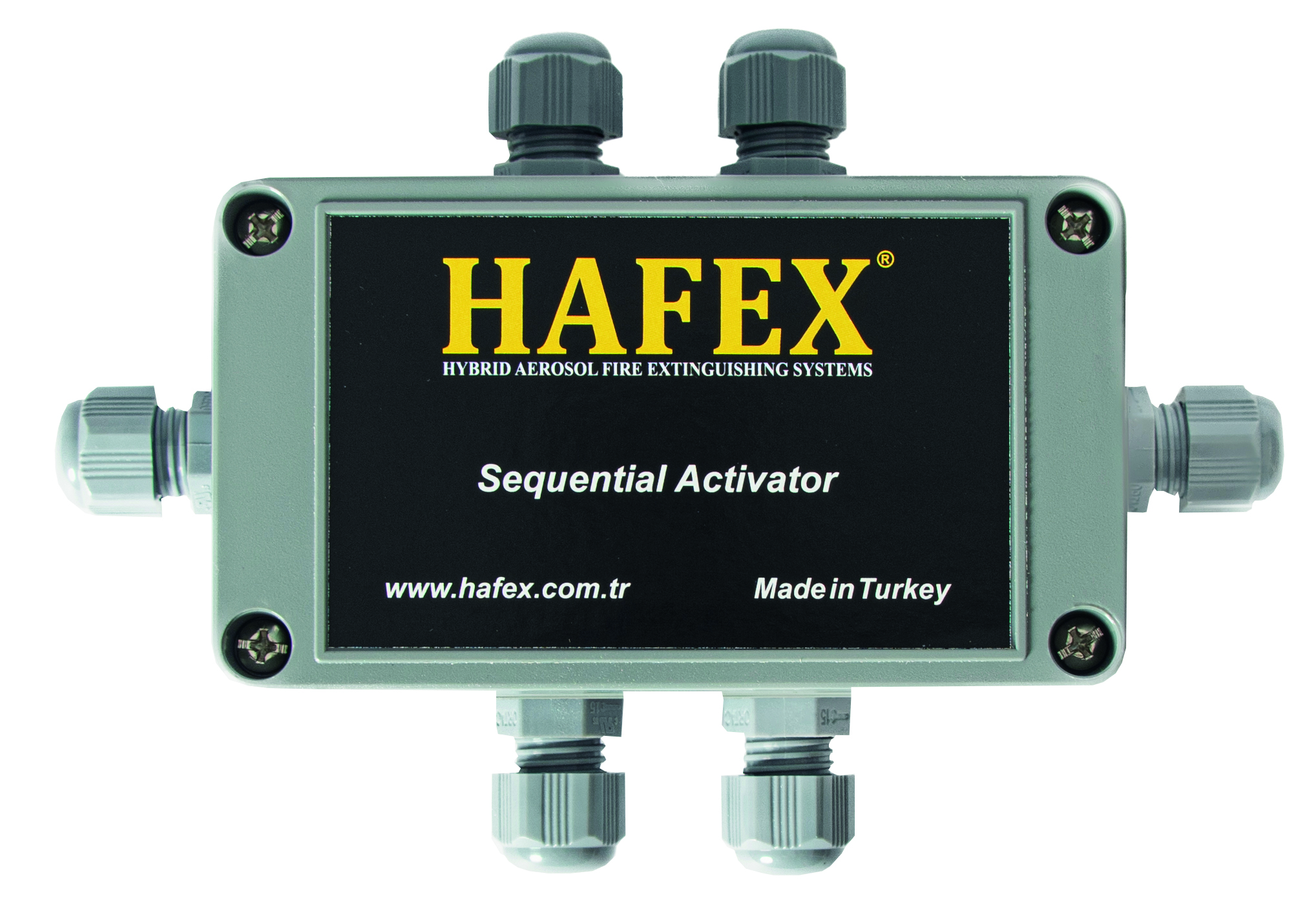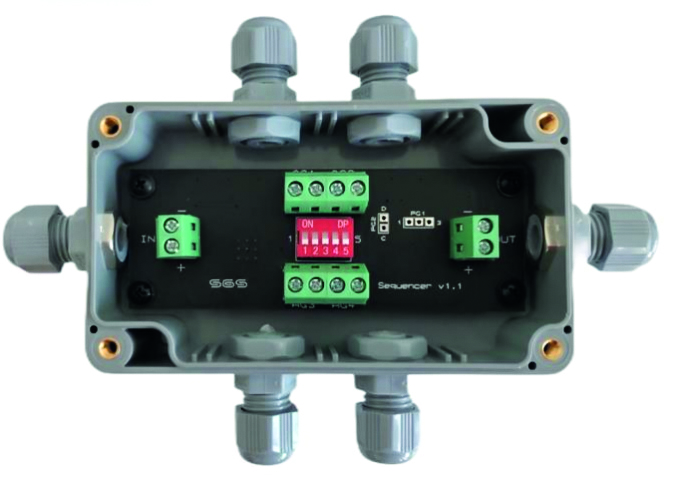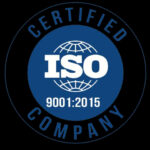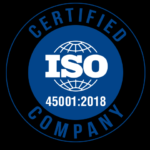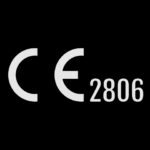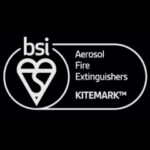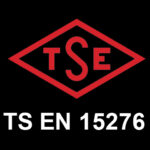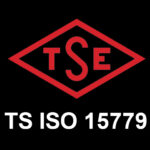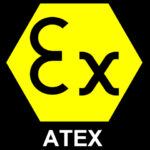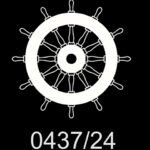HFXSQR SEQUENTIAL ACTIVATOR
When more than 4-5 aerosol extinguishing units are connected in series or more than 2-3 in parallel to the extinguishing output of a panel with a 24V DC supply voltage, it is difficult for the panel's extinguishing output to electrically activate the aerosol extinguishing units. When more than this number is connected to the panel's extinguishing output, there is a possibility that some units will not be activated.
When more than 4-5 aerosol extinguishing units are connected in series or more than 2-3 in parallel to the extinguishing output of a panel with a 24V DC supply voltage, it is difficult for the panel's extinguishing output to electrically activate the aerosol extinguishing units. When more than this number is connected to the panel's extinguishing output, there is a possibility that some units will not be activated.
| Feature | Detail |
|---|---|
| Supply Voltage Range | 6 – 35V DC |
| Working Current | 1.2 mA @ 24 DC (during delay) / 6.2 mA @ 24V DC (on activation) |
| Aerosol Unit Trigger Current | 1.4 A nominal (electronic current limiting) |
| Start Delay Time (t1) | 500ms |
| Programmable Delay Time (t2) | 500 ms x (Sequence No) |
| Aerosol Unit Trigger Time (t3) | 100ms |
| Waiting Time Between Units (t4) | 25ms |
Fire Classes in Which Aerosol Fire Extinguishers Are Effective:
Aerosol fire extinguishers are effectively used in the following classes of fire in a closed environment:
- Class A Fires: Fires of combustible solid organic materials such as wood, coal, paper, grass, textiles, plastic and similar materials.
- Class B Fires: Fires involving liquid flammable materials such as gasoline, diesel, fuel oil, mineral oils, paint, varnish, thinner, alcohol, acetone and glue.
- Class C Fires: Fires of flammable gases such as LPG (liquefied petroleum gas), propane, natural gas, methane, hydrogen, acetylene and fires of gaseous materials liquefied under pressure.
- Electrical and Electronic Equipment Fires: Fires occurring in electrical and electronic equipment, transformers, electrical distribution systems and panels, computer and data processing system cabinets, and telecommunication devices.
Application Areas
Transformers, main switchgear rooms, cable tunnels and ducts, electrical panels and cabinets, power distribution facilities, generator turbines, etc.
Server rooms and cabinets, data storage and data processing areas, GSM base stations and switchboards, radio link stations, etc.
Engine rooms and cabins, cargo holds, speedboats, super yachts, sailboats, tugboats, control rooms, etc.
Engine rooms and cabins, cargo holds, speedboats, super yachts, sailboats, tugboats, control rooms, etc.
Engine cabins of mining vehicles, trucks, lorries, urban and intercity buses and minibuses, etc. According to the United Nations decision, Fire Extinguishing Systems to be used in buses have been made mandatory and the requirement for fire systems to have UNECE R107 certification has been introduced. TSE has documented the first and only R107 certification by giving it to HAFEX Hybrid Aerosol Extinguishing Systems.
Machinery and equipment used in factories, CNC lathes, milling machines, automation control and power distribution panels, generator and battery rooms, etc.
Pump-valve stations and rooms, machinery areas, petrochemical and gas pipeline systems, control and command rooms, etc.
Locomotives, wagons, stations, command and control rooms, repair and maintenance workshops, signaling and navigation control systems, etc.
Certificates
